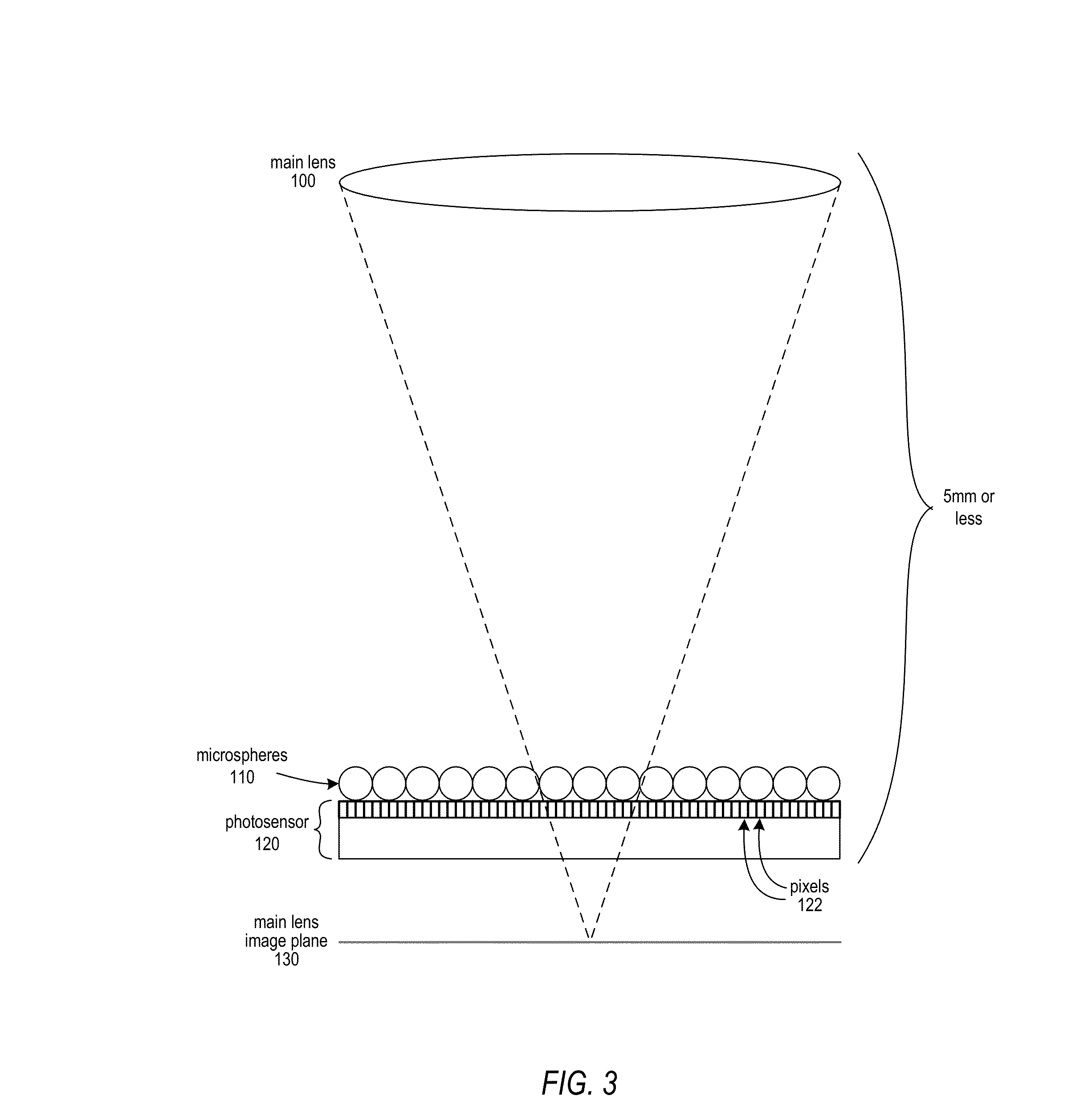Thin Plenoptic Cameras Using Solid Immersion Lenses
a technology of solid immersion lens and plenoptic camera, which is applied in the field of thin plenoptic camera using solid immersion lens, can solve the problems of reducing the quality and resolution of images that can be captured with conventional camera technology, affecting the quality of images, so as to reduce aberration, improve focus, and reduce the effect of pixel siz
- Summary
- Abstract
- Description
- Claims
- Application Information
AI Technical Summary
Benefits of technology
Problems solved by technology
Method used
Image
Examples
example implementations
of Rendering Techniques
[0073]Embodiments of rendering techniques, for example super-resolution rendering techniques, that may be used to render high-resolution output images from raw image data captured by embodiments of the various thin plenoptic cameras as described herein may be performed by a rendering module implemented by program instructions stored in a computer-readable storage medium and executable by one or more processors (e.g., one or more CPUs or GPUs) of a computer system or other device. FIG. 15 illustrates a rendering module rendering images from a flat captured, for example, by one of the various embodiments of a thin plenoptic camera as described herein. Rendering module 920 may, for example, implement super-resolution methods for rendering super-resolved images from flats captured using focused plenoptic cameras, as described in U.S. patent application Ser. No. 12 / 690,869, entitled “Super-Resolution with the Focused Plenoptic Camera” filed Jan. 20, 2010, U.S. pate...
PUM
 Login to View More
Login to View More Abstract
Description
Claims
Application Information
 Login to View More
Login to View More - R&D
- Intellectual Property
- Life Sciences
- Materials
- Tech Scout
- Unparalleled Data Quality
- Higher Quality Content
- 60% Fewer Hallucinations
Browse by: Latest US Patents, China's latest patents, Technical Efficacy Thesaurus, Application Domain, Technology Topic, Popular Technical Reports.
© 2025 PatSnap. All rights reserved.Legal|Privacy policy|Modern Slavery Act Transparency Statement|Sitemap|About US| Contact US: help@patsnap.com



